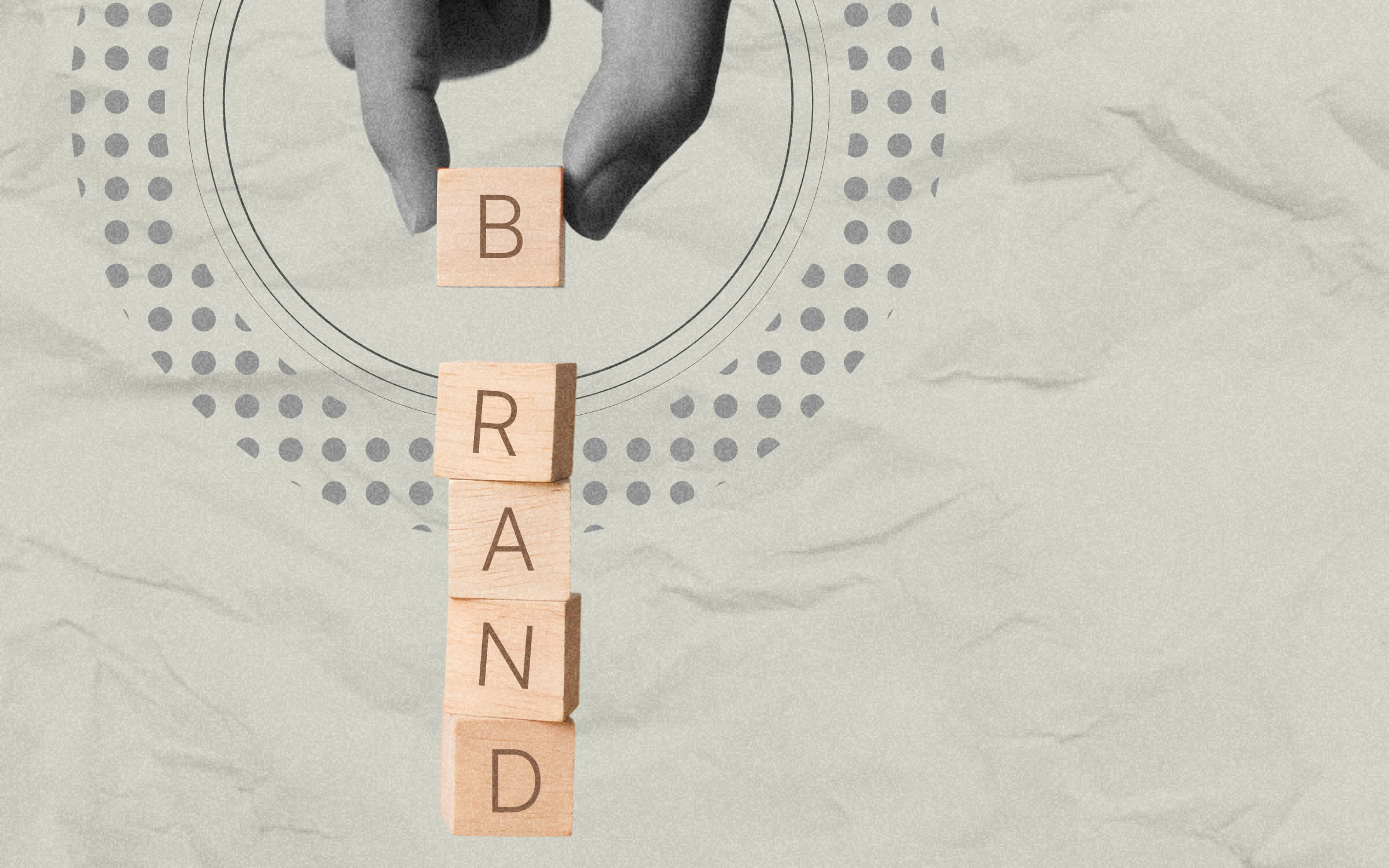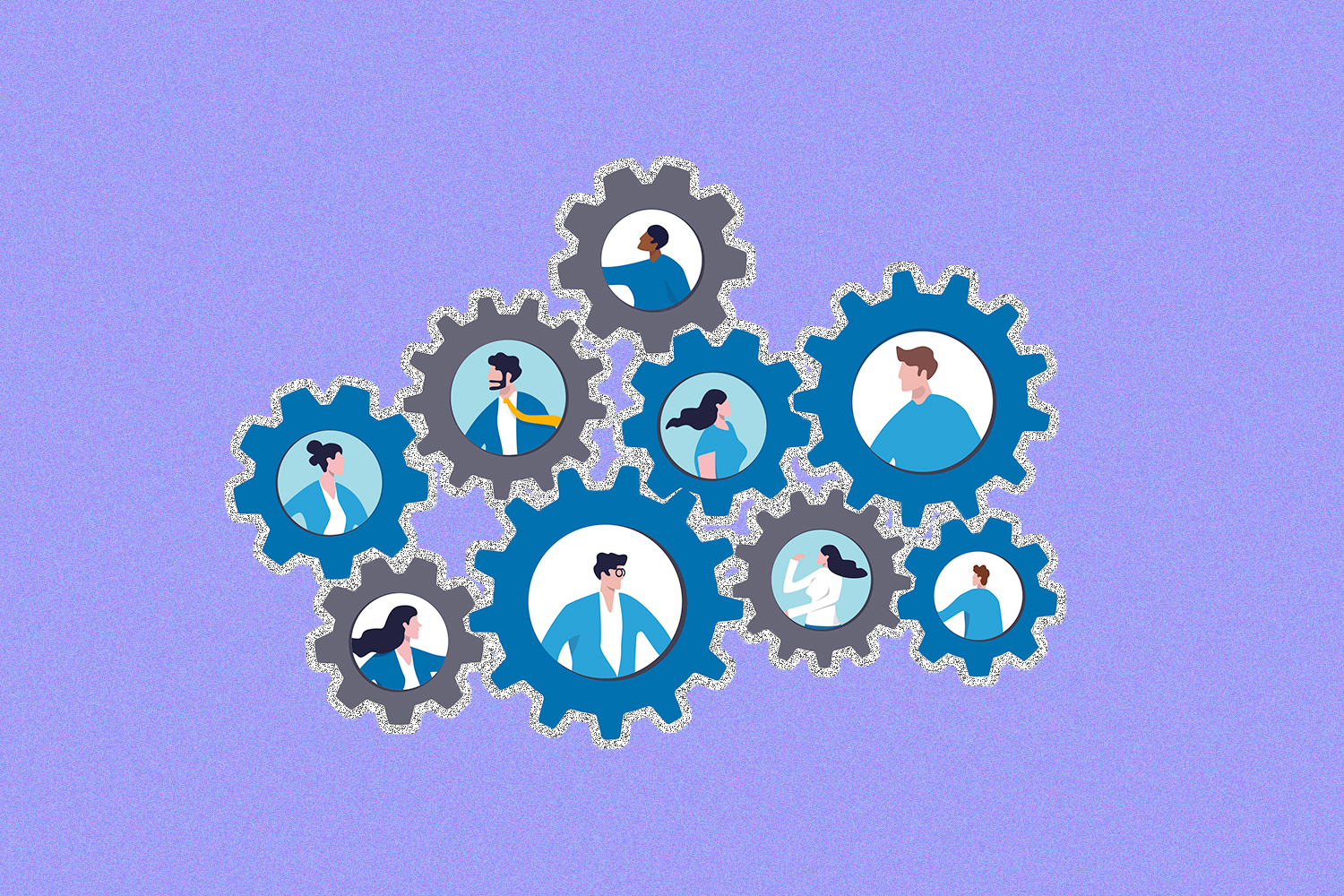Over the past year, we’ve been asking for DEI book recommendations from practitioners across industries. What we received were more than 10 recommendations, mostly spanning topics on creating inclusive work cultures, but also books on race in the workplace, allyship, self-care, and more. Whether you’re looking for a company book club recommendation or a book on building a culture of belonging at work, this list has the book for you.
Here are 10+ diversity books your colleagues recommend you read in 2025.
1. “The Inclusive Language Handbook: A Guide to Better Communication and Transformational Leadership”
- Authors: Roxanne Bellamy and Jackie Ferguson
- Pages: 102
- Summary: This book is a testament to how much easier and more fruitful conversations can be when we’re intentional with language. As communication styles and diction become increasingly nuanced, you’re going to want to ensure you’re speaking with purpose as a DEI leader. “The Inclusive Language Handbook” can help you get there.
- Recommended by: Donald Thompson, co-founder and CEO of The Diversity Movement
- Why it’s a must-read: “When leaders are just starting in DEI, this is one of the first reads I recommend because it doesn’t make it about social justice; it doesn’t make it about the nomenclature. It makes it about how to have conversations with broader groups of people that are more effective and produce better outcomes,” Thompson shares. “Independent of industry and independent of maturity in terms of your DEI walk, everyone can improve their inclusive language.”
2. “Carry Strong: An Empowered Approach to Navigating Pregnancy and Work”
- Author: Stephanie Kramer
- Pages: 352
- Summary: Stephanie Kramer expertly combines her research with firsthand accounts from women who have deftly maneuvered pregnancy and working to offer a handbook for organizational leadership to better support women and caregivers. She also outlines career considerations mothers may need to make along every step of their pregnancy.
- Recommended by: Abby Hollern, director of DEIB at Guild
- Why it’s a must-read: “Stephanie Kramer is coming to talk at Guild and she wrote ‘Carry Strong: An Empowered Approach to Navigating Pregnancy and Work,’ but what it’s really about is gender equity and gaps that can happen if you aren’t thoughtful around caregiving,” Hollern says. “It ties back directly to what we’ve been doing [at Guild] because we just launched a caregivers employee resource group, and we’re looking at caregiving extensively, and not just parenting because that’s not the only kind of caregiving.”
3. “Self-Care for Black Women: 150 Ways to Radically Accept & Prioritize Your Mind, Body, & Soul”
- Author: Oludara Adeeyo
- Pages: 192
- Summary: “Self-Care for Black Women” provides 150 exercises complete with prompts that give you the space to prioritize yourself and your well-being. This book is the proverbial oxygen mask you’re told put on before you can fully show up to help others.
- Recommended by: Malaika Serrano, VP of DEI at Guild
- Why it’s a must-read: “We often over-extend ourselves in service to others, sometimes at the expense of our own health and well-being,” says Serrano. “We must be intentional about nurturing ourselves.”
4. “The Inclusive Language Field Guide: 6 Simple Principles for Avoiding Painful Mistakes and Communicating Respectfully”
- Author: Suzanne Wertheim
- Pages: 256
- Summary: Suzanne Wertheim applies her background as a linguistic anthropologist to outline six principles that will help you effectively communicate with anyone, whether it be written or verbal. The six pillars of the book that will help you get there are: reflect reality, show respect, draw people in, incorporate other perspectives, prevent erasure, and recognize pain points.
- Recommended by: Rachel Williams, chief diversity and inclusion officer at The Motley Fool
- Why it’s a must-read: “Suzanne’s guide provides invaluable insights into the power of language in shaping inclusive environments. It’s a practical tool for refining our communication skills and ensuring our words reflect our commitment to diversity.”
5. “Reconstructing DEI: A Practitioner’s Workbook”
- Author: Lily Zheng
- Pages: 328
- Summary: In Lily Zheng’s third book, and the follow-up to “DEI Deconstructed: Your No-Nonsense Guide to Doing the Work and Doing It Right,” which was featured in our 2023 DEI books list, they offer original exercises that will help DEI practitioners create a lasting impact within their organizations.
- Recommended by: Rolondo Talbott, senior manager of DEI at Disney’s Parks, Experiences, and Products
- Why it’s a must-read: Talbott writes in a LinkedIn post: “I am excited to read about ‘Power and Influence.’ As a neurodivergent practitioner, concepts such as these are difficult for me to conceptualize, let alone navigate. Can’t wait for the new book!”
6. “Inclusify: The Power of Uniqueness and Belonging to Build Innovative Teams”
- Author: Dr. Stefanie K. Johnson
- Pages: 288
- Summary: Dr. Stefanie K. Johnson’s definition of an inclusive workplace isn’t one where everyone acts and thinks the same. An inclusive workplace is one whose leaders are “inclusifying,” or encouraging everyone to be themselves, to share their ideas, and to collaborate. Johnson outlines how employers can be better at welcoming their employees’ differences and why it’s important.
- Recommended by: Juan Suarez, CDO at Southwest Airlines
- Why it’s a must-read: “We have a number of books that we utilize in our talent leadership development departments,” says Suarez. “[‘Inclusify’] is a great book that…we’ve asked our employees and our leaders to read and utilize in the [talent leadership development] classes.”
7. “How to Be an Ally: Actions You Can Take for a Stronger, Happier Workplace”
- Author: Melinda Briana Epler
- Pages: 288
- Summary: In this easy-to-follow book, Melina Briana Epler, CEO of learning and development platform Empovia, shares five key takeaways to becoming a better, more reliable ally. She emphasizes the importance of empathy, gives an overview of how different implicit biases show up in the workplace, and lists examples of how to initiate covert cultural change if your company’s C-suite isn’t backing your DEI efforts.
- Recommended by: Rachel Williams, chief diversity and inclusion officer at The Motley Fool
- Why it’s a must-read: “Melinda offers a comprehensive guide on allyship, exploring the critical role we can all play in advancing DEI efforts. Her book is a blueprint for turning good intentions into tangible actions that drive positive change.”
8. “Reimagine Inclusion: Debunking 13 Myths To Transform Your Workplace”
- Author: Mita Mallick
- Pages: 288
- Summary: On the other side of your fear is a synergetic workforce composed of even-handed managers and supportive executives. As the DEI leader at your company, you’re responsible for understanding what’s holding you back from achieving equity and inclusion in your workplace. Mita Mallick, a journalist and the head of inclusion, equity, and impact at Carta, helps you jump-start this journey to understanding.
- Recommended by: Malaika Serrano, VP of DEI at Guild
- Why it’s a must-read: Serrano says of her recommendation: “I appreciate Mita’s active thought leadership in the DEIB space. We all know that this work begins with ourselves, and her book invites the reader to hold up the mirror, unpack their biases, and interrogate the status quo.”
9. “Crucial Conversations: Tools for Talking When Stakes Are High, Third Edition”
- Author: Emily Gregory, Joseph Grenny, Ron McMillan, Kerry Patterson, and Al Switzler
- Pages: 304
- Summary: Communication is one of the hardest skills to learn, and necessary if you want to be influential in your work. While some individuals are inherently better at communicating than others, the beauty of the skill is that it’s one anyone can learn and master. “Crucial Conversations” gives you the resources to get there.
- Recommended by: Anna Budden, international DEI manager at Jaguar Land Rover
- Why it’s a must-read: “As an HR practitioner, a lot of times I’m just coaching people on how to talk to one another. This book breaks down how to just have a conversation with one another…a lot of things escalate because people don’t know how to talk to one another,” Budden says. “This book isn’t a DEI book, but it lends itself to inclusion without saying any of those words.”
10. “The Inclusive Organization: Real Solutions, Impactful Change, and Meaningful Diversity”
- Author: Netta Jenkins
- Pages: 240
- Summary: In her debut novel, Netta Jenkins, the CEO of Aerodei, VP of global inclusion at Unqork, and founding member of the DEI Think Tank, creates a model for DEI practitioners to use to define and scale their DEI strategy at any organization. Jenkins draws on firsthand experiences and business cases to bring her ideas to life in a digestible, handy format.
- Recommended by: Dr. Laura Methot, managing director at I&D 101
- Why it’s a must-read: “Several points in [Jenkins’s] chapter on surveys struck me, the hardest hitter being about psychological safety. I have never had difficulty checking my demographic boxes: white, hetero, female,” shares Methot in a LinkedIn post. “Growth happens when we step out of our comfort zones where things feel challenging. Don’t run away from it.”
11. “Revolution to Evolution: The Story of the Office of Minority Affairs & Diversity at the University of Washington”
- Author: Emile Pitre
- Pages: 360
- Summary: Emile Pitre was a founding member of the Black Student Union at the University of Washington in the 1960s. This group led to the university becoming the first to ever hire a dedicated DEI practitioner. Pitre, through primary resources including interviews and letters, illustrates how the university’s Office of Minority Affairs and Diversity came to life.
- Recommended by: Paul R. Johnson, CDO and VP of people and culture at Seattle Symphony Orchestra
- Why it’s a must-read: “[Emile Pitre’s] recently released book about the past five decades of equity, diversity, and inclusion at the University of Washington is filled with interesting facts and is incredibly informative,” says Johnson in a LinkedIn post. “It will certainly assist me with my own initiatives and strategies for change, and implementing DEI in my current role. If you’re involved in education, have DEI efforts you’re working on, or are simply interested in University of Washington history, I highly recommend reading Revolution to Evolution!”
12. “The Wake Up: Closing the Gap Between Good Intentions and Real Change”
- Author: Michelle MiJung Kim
- Pages: 288
- Summary: Michelle MiJung Kim, CEO of Awaken, a DEI training platform she co-founded with Beatrice Kim in 2017, pulls from her background as a queer immigrant Korean American woman and activist to outline how DEI practitioners can better understand their employees as they heal and thrive together. The book is divided into four parts: identifying your unique story to propel you along your social justice journey, understanding how white supremacy got us here, learning how you can show up for diverse communities, and succeeding with a people-centric culture.
- Recommended by: Rachel Williams, chief diversity and inclusion officer at The Motley Fool
- Why it’s a must-read: “Michelle’s thought-provoking book challenges us to confront our biases and take action towards meaningful change. Her personal journey inspires us to wake up to the realities of inequity and become active allies in the fight for justice,” Williams writes in a LinkedIn post.
13. “Race, Work, and Leadership: New Perspectives on the Black Experience”
- Authors: Laura Morgan Roberts, Anthony J. Mayo, and David A. Thomas
- Pages: 512
- Summary: Since “Race, Work, and Leadership,” was published in 2019, the collection of essays has served as a vade mecum for DEI practitioners working to understand African Americans’ experience in today’s workplace. Not only do the authors, three wildly successful leaders in academia, extensively recount what the barriers to inclusivity look like but also how you can move them aside now that you know what you’re looking at.
- Recommended by: Malaika Serrano, VP of DEI at Guild
- Why it’s a must-read: “This book is nourishment for my DEIB scholar-practitioner soul. Powerful articles and essays from thought leaders from a variety of disciplines and insights can be applied across numerous industries,” says Serrano.
14. “Subtle Acts of Exclusion: How to Understand, Identify, and Stop Microaggressions”
- Author: Dr. Tiffany Jana and Dr. Michael Baran
- Pages: 200
- Summary: This book is for anyone who doesn’t understand why their well-intentioned compliment offended the receiver. The titular title is a term coined by the authors, Dr. Tiffany Jana and Dr. Michael Baran, that encapsulates the harmful effects of microaggressions in the workplace.
- Recommended by: Dr. Jonathan Ashong-Lamptey, founder and managing director of Element of Inclusion
- Why it’s a must-read: “Microaggressions reframed. This avoids defensiveness or diminishing the issue,” Ashong-Lamptey shares in a LinkedIn post.
15. “The Culture Map: Breaking Through the Invisible Boundaries of Global Business”
- Author: Erin Meyer
- Pages: 290
- Summary: If you’re a member of a global team but aren’t sure how to approach colleagues in other countries or continents, maybe you recently had an interaction that went south because of a cultural misunderstanding, this book is for you. It offers real-world examples of conversations and how to correctly approach them to build stronger, more nuanced relationships with colleagues and peers around the globe.
- Recommended by: Zach Rubinstein, global director of inclusion and diversity learning at Expedia Group
- Why it’s a must-read: “[The book] looks at different aspects of how you build trust [in] working relationships,” says Rubinstein. “Really, the end goal [of Expedia’s cross-cultural competency pilot program] is to understand the different sides of two people showing up to the same working group and knowing how to be flexible.”
16. “Transgender Inclusion: All the Things You Want to Ask Your Transgender Coworker but Shouldn’t”
- Author: A.C. Fowlkes
- Pages: 256
- Summary: A LinkedIn Top Voice and CEO of Fowlkes Consulting, an LGBTQ+ sensitivity and inclusion consulting firm, author A.C. Fowlkes writes about the workplace experiences of trans people and how readers can better support these employees. Fowlkes explains the medical, social, and legal experiences that transgender employees go through. You can pre-order the book now — it’s slated to publish on January 18.
- Recommended by: Raven Solomon, DEI speaker, author, consultant, and host of The DEI ER, a weekly LinkedIn conversation series on diversity issues
- Why it’s a must-read: “Books like these that shed light on real, lived experiences can be the catalyst for self-reflection and change,” says Solomon in a LinkedIn post.
17. “Inclusive Leadership: Equity and Belonging in Our Communities”
- Author: Joanne Barnes, Michael J. Stevens, Bjørn Zakarias Ekelund, and Karen Perham-Lippman
- Pages: 332
- Summary: Karen Perham-Lippman is one of four editors who brought “Inclusive Leadership” to life. The book is divided into four parts: understanding DEIB, education and DEIB, practicing DEIB, and a community and global perspective of DEIB. Chapters range in topics from inclusive leadership for social justice to how to influence employee engagement, offering perspectives from practitioners and academics.
- Recommended by: Karen Perham-Lippman, founding member of the DEI Think Tank
- Why it’s a must-read: “[Scholars] Cary, Valencia, Tamarah, and Trenae remind us that storytelling has the power to shape organizational culture,” says Perham-Lippman in a LinkedIn post. “Behind every word and every story is a human experience. Experiences to be valued, acknowledged, understood, and celebrated.”
Looking for more DEI insights? The Senior Executive DEI editorial team has put together valuable resources, including a list of DEI podcasts, a 2024 DEI calendar, and more.






